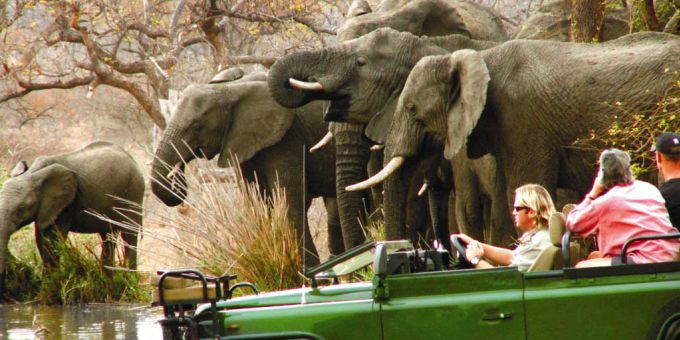
Going on a safari in Kruger National Park is easier said than done, and booking a trip requires planning ahead of time and considering all of the various possibilities.
There are several exciting safari drives to include in Kruger Park safaris.
Best wildlife viewing areas in Kruger National ParkThe route from Skukuza to Lower Sabie follows the Sabie River through the thorn thickets and mixed forests surrounding Skukuza and into the more open grasslands of south-eastern Kruger. This riverine woodland is said to have more leopards per square kilometre than anyplace else in South Africa.
Lion and hyaena sightings are common in the Skukuza region.
The Nkuhlu Picnic Site is the sole rest stop along this road, and the terraced banks provide excellent views of the river and its resident hippo and croc populations. The N’watimhiri Causeway is a pleasant diversion off the main route. As the bush opens out closer to Lower Sabie, larger groups of grazers become visible. In the thorn thickets near Lower Sabie Camp, keep an eye out for cheetah and rhino.
The Voortrekker Road, which connects Pretoriuskop and Afsaal, descends from the lower escarpment’s slopes. The dust road follows a line of sweetveld grazing through the sourveld in south-western Kruger, thus sightings of uncommon game like as eland, white rhino, and sable antelope are more likely than typical.
The Skukuza-Satara tar road, which rises out of the Sabie River valley into the central grasslands, offers the highest opportunity of viewing lions in Kruger Park. Elephants are frequently spotted in the mixed forests surrounding the N’watindlopfu River bridge and the three neighbouring water holes.
Tshokwane lies about halfway between Skukuza and Satara and the only rest point along the trip with food and refreshments.
- Chamisa under fire over US$120K donation
- Mavhunga puts DeMbare into Chibuku quarterfinals
- Pension funds bet on Cabora Bassa oilfields
- Councils defy govt fire tender directive
Keep Reading
Because of the confluence of mixed forest, patches of grassland, riverine bush, and the Lebombo mountains, the Tshokwane region is generally ideal for wildlife watching.
North of Tshokwane, the central grasslands begin. This is big-game area, with the Park’s greatest herds of grazers and the big predators that hunt them. Buffalo and lion sightings are common in the plains surrounding Satara.
The Luvuvhu River drive, which includes the Luvuvhu River Bridge, Pafuri Picnic Site, the route to Crooks’ Corner, and Nyala Drive, is the ultimate far northern Kruger experience. The Luvuvhu River valley is home to spectacular woodland clusters and river vantage points, as well as a plethora of crocodiles that sun themselves on the sandbanks.
Nyala, kudu, impala, and baboons are common in riverine forests dominated by nyala trees. The tropical river woods are home to the majority of the leopards in northern Kruger.
What time of the year is best for Kruger Park safaris?All year round, Kruger Park is a famous tourist attraction. Peak seasons occur during school vacations in June, July, September, and December. Public holidays, particularly those with a long weekend, are also in great demand. These days might become fully booked over a year in advance.
The ideal time to see animals in the park is during the dry winter season, which lasts from June to October. The grass is short, and the shrubs and trees are sparsely planted, so you should have a clear view of the surrounding region. Animals congregate around waterholes, giving for better game watching.
Also Read: Gonarezhou National Park vs Kruger National Park: The ultimate comparison











